Everest Base Camp Difficulty – The Everest Base Camp Trek is a breathtaking adventure that takes you on a journey through the stunning landscapes of the Himalayas. From the bustling streets of Kathmandu to the remote mountain villages this trek offers a truly immersive experience into the heart of Nepal. As you make your way through the winding trails you’ll be surrounded by soaring peaks, vast glaciers, and roaring rivers that will leave you speechless. Along the way, you’ll encounter friendly locals, taste delicious local cuisine, and learn about the fascinating culture and traditions of the Sherpa people. And when you finally reach Everest Base Camp, the sense of accomplishment and awe that you’ll feel is truly indescribable. This is a journey that will stay with you forever and leave you longing for more.
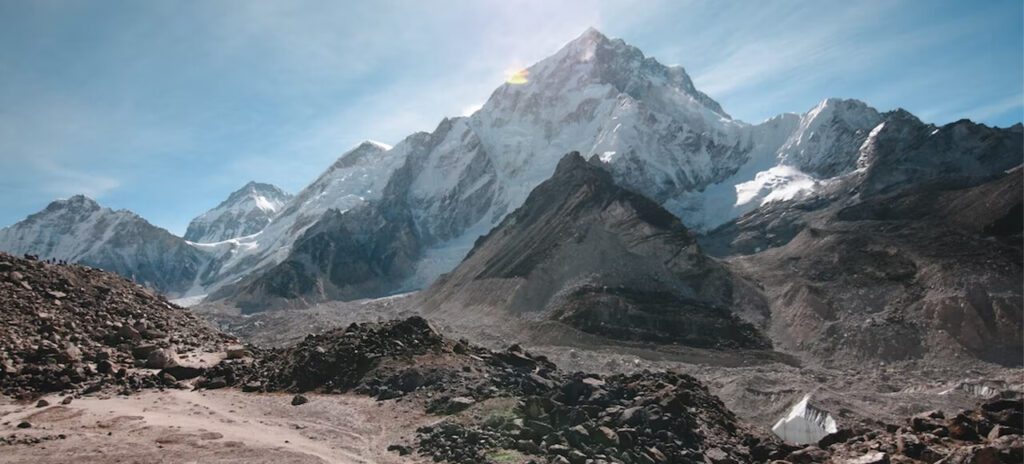
Reaching the base camp of the world’s tallest mountain Mount Everest is a dream for many adventurers and hikers around the world. The trek to Everest Base Camp is a once-in-a-lifetime experience that requires physical fitness, mental toughness, and a lot of determination. While the journey to the base camp may not require any technical climbing skills it is still a challenging trek that demands proper preparation and planning.
High Altitude is the main factor of Everest Base Camp Difficulty
Trekking to Everest Base Camp is an incredibly challenging journey and one of the biggest obstacles that trekkers face is high altitude. As the altitude increases the air pressure and oxygen levels decrease, making it harder for the body to function correctly. This lack of oxygen can lead to altitude sickness a serious condition that can be potentially fatal if not treated promptly. Altitude sickness is caused by the body’s inability to adjust to the decreased levels of oxygen at higher altitudes.

Symptoms of altitude sickness can range from mild to severe, including headaches, nausea, vomiting, dizziness, fatigue and difficulty sleeping. It is essential to be aware of these symptoms and take appropriate measures to prevent and treat altitude sickness. The best way to prevent altitude sickness is by acclimatizing properly. This involves spending several days at higher altitudes to allow the body to adapt to the changes in oxygen levels.
Dehydration is also a significant issue while trekking at high altitudes. The dry mountain air and the high altitude can cause dehydration, making it difficult for trekkers to consume enough fluids to maintain their energy levels. The cold temperatures at night can exacerbate this problem as it can be challenging to stay hydrated when water freezes at night.
Weather is also included in Everest Base Camp Difficulty
The Everest region is known for its extreme weather conditions which can make the trek to Everest Base Camp challenging. During the monsoon season from June to August, the region experiences heavy rainfall which can make the trails slippery and muddy. Trekkers need to be extra careful while trekking during this season as the risk of slipping and falling increases. The heavy rainfall can also cause landslides which can block the trails and add to the difficulty of the trek.
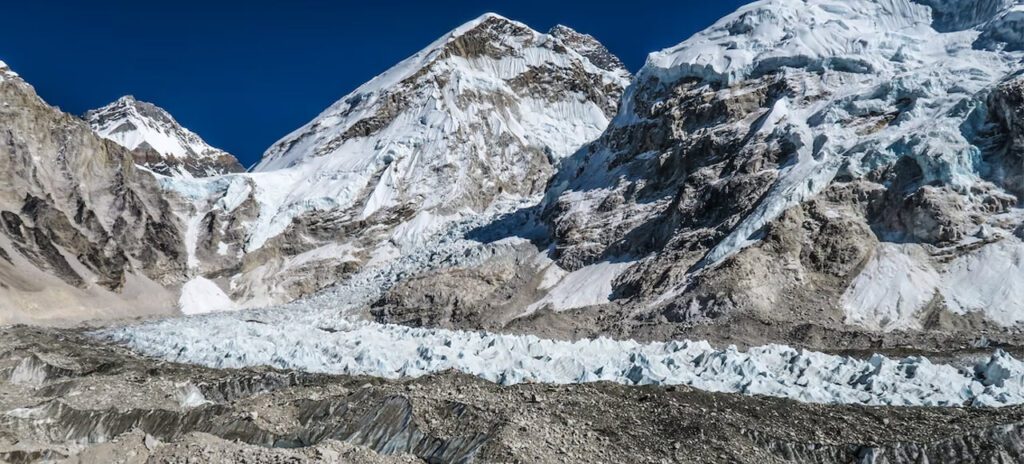
During the winter months from December to February, the region experiences heavy snowfall which can cover the trails with snow, ice or slush. This can make it challenging for trekkers to navigate the trails, especially at higher altitudes. The cold weather during this season can also make it difficult to stay warm and trekkers need to be prepared with appropriate clothing and gear.
While trekking to Everest Base Camp, trekkers must deal with strong winds as a major obstacle. Powerful winds, which can be especially strong at higher elevations, are common to the area. In order to avoid being pushed off the path by powerful wind gusts, trekkers must exercise additional caution when crossing high peaks.
Cold Temperature
One of the main difficulties caused by cold temperatures during the Everest Base Camp trek is the risk of hypothermia. Hypothermia occurs when the body loses heat faster than it can produce it and it can be life-threatening if left untreated. Trekkers must take precautions to avoid hypothermia by wearing appropriate clothing and monitoring their physical condition closely.
Another risk associated with cold temperatures is frostbite which occurs when skin and other tissues freeze due to prolonged exposure to cold. The fingers, toes, nose and ears are particularly susceptible to frostbite and it can lead to permanent damage if not treated promptly. To prevent frostbite, trekkers must wear appropriate clothing and protect any exposed skin.
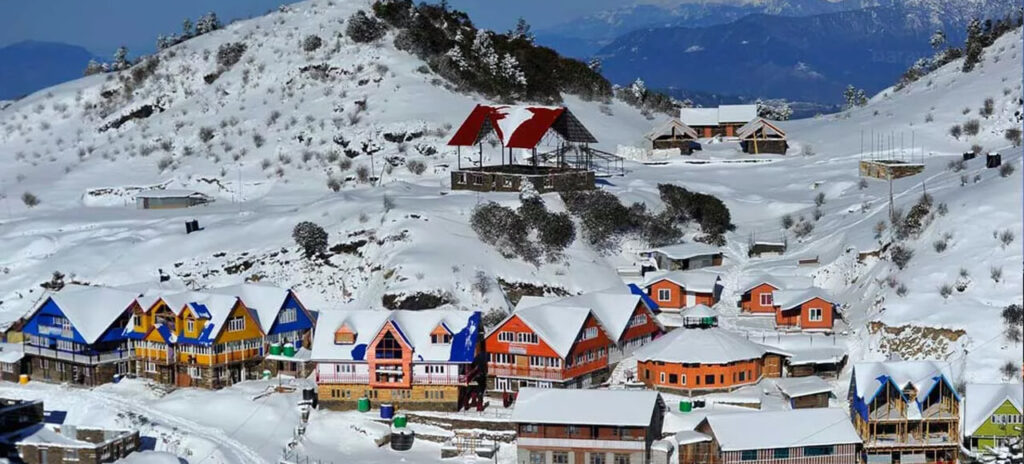
The cold temperatures can also make it challenging to get a good night’s sleep. Even with warm clothing and sleeping bags, it can be difficult to stay warm enough to sleep soundly which can leave trekkers feeling tired and unprepared for the next day’s activities. Moreover, during the winter months, the daylight hours in the Everest region are limited, with only a few hours of sunlight each day. This can make it challenging to cover the necessary distances in the limited time available especially if the weather conditions are also adverse.
Also Check: 13 Things you need to Know about Mount Everest
EBC in Winter
The temperature at Everest Base Camp in winter can vary widely depending on the time of day and the specific weather conditions. Generally, during the daytime in winter, temperatures can range from -15°C to 5°C. However, at night, temperatures can drop dramatically, sometimes reaching as low as -20°C to -30°C. It is important to note that the temperatures at Everest Base Camp can be very unpredictable and can change rapidly so it is important to be prepared for extremely cold weather conditions at all times.
You need a strong Physical Fitness to beat Everest Base Camp Difficulty
The Everest Base Camp trek is an adventure of a lifetime that requires a significant amount of physical fitness. The trek can last up to three weeks and involves long hours of walking on steep hills and rugged terrain which can be challenging even for those who are physically fit. Climbing to high altitudes can also take a toll on the body, making it more difficult to breathe and leading to symptoms such as headaches, dizziness and nausea. Therefore, physical fitness plays an essential role in determining the success and enjoyment of the Everest Base Camp trek.
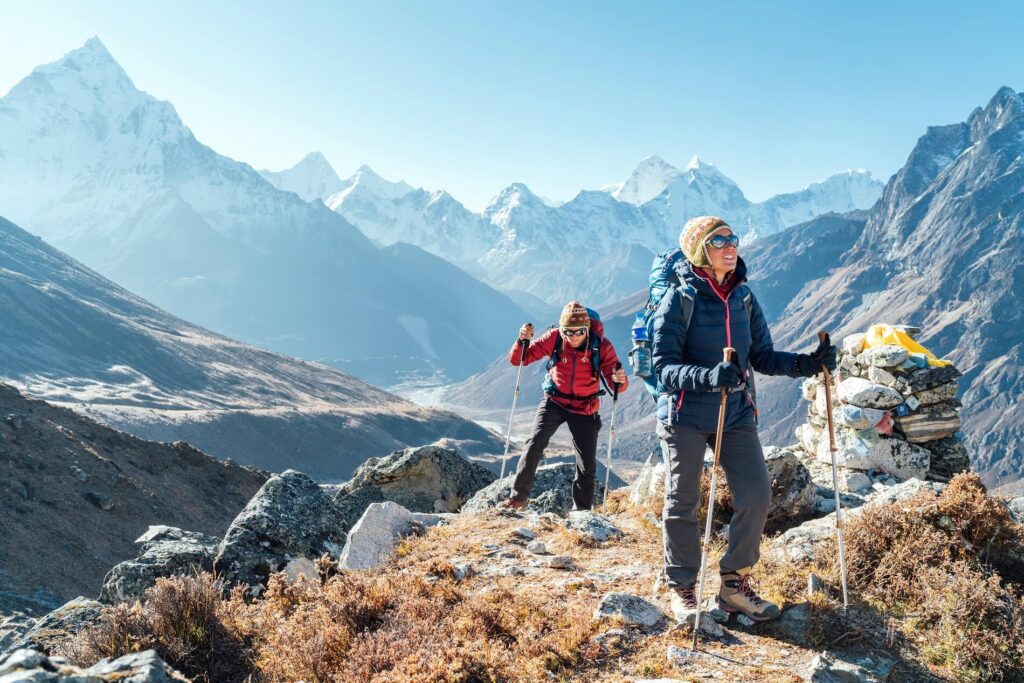
Training before the trek is essential for improving physical fitness. This can involve regular cardiovascular exercises, such as running, hiking, or cycling, to build endurance and stamina. It is also essential to work on strength training, focusing on the core, legs, and upper body to improve the ability to carry the weight of a backpack and navigate difficult terrain. Trekkers should also practice hiking in high altitudes to get accustomed to the effects of thin air on their bodies.
Rocky Trails is also a factor of Everest Base Camp Difficulty
Trekking on rocky trails is one of the most challenging aspects of the Everest Base Camp trek. The terrain is uneven and unpredictable which can make it difficult to maintain a steady pace. Trekkers must be alert and aware of their surroundings at all times to avoid slipping or tripping on rocks and boulders. Even with proper preparation the unpredictable terrain can be challenging to navigate especially in adverse weather conditions.
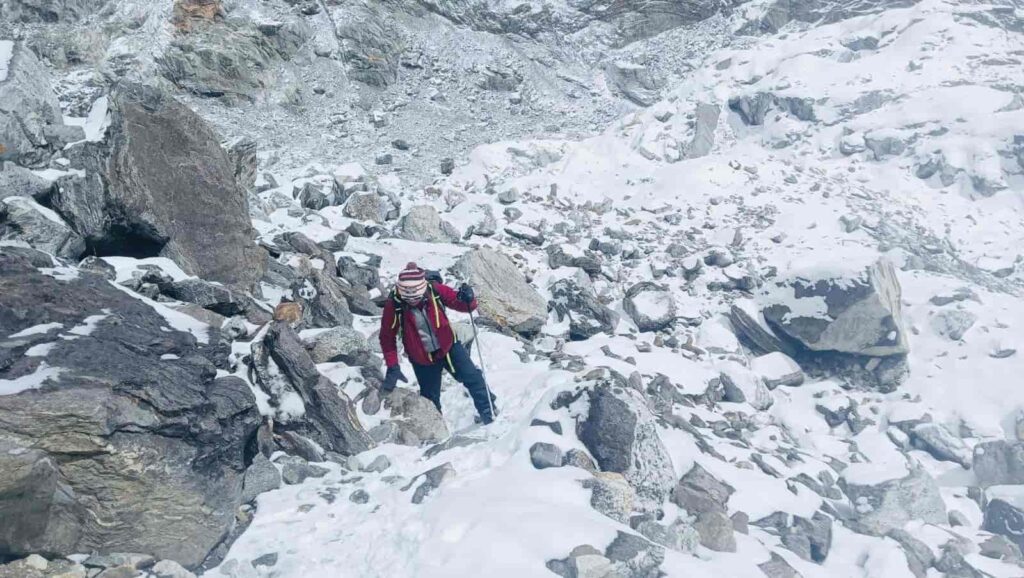
Walking on rocky terrain requires a greater physical effort than walking on flat surfaces. The uneven terrain can cause fatigue and muscle soreness in the legs and feet making the journey more demanding. It is essential to maintain a slow and steady pace to avoid overexerting oneself and to ensure a safe and comfortable journey. In addition to physical strain, trekking on rocky trails also poses a higher risk of injury. Twisted ankles, sprains and bruises are common, especially if the trekker is not wearing appropriate shoes or not following proper hiking techniques. Injuries can be severe and can lead to the need for evacuation in extreme cases.
Narrow Path
Everest Base Camp Difficulty: A narrow path is a challenging terrain that presents several difficulties for individuals who traverse it. The path’s limited space makes it challenging for people to pass each other, leading to congestion, delays, and frustration. This can be particularly challenging in high-traffic areas, where several people may be using the path simultaneously. Furthermore, the terrain on narrow paths is often uneven, rocky or slippery. This can make it challenging for individuals to walk on the path, especially if they are not wearing appropriate footwear. People may slip and fall leading to injuries or even more severe accidents.
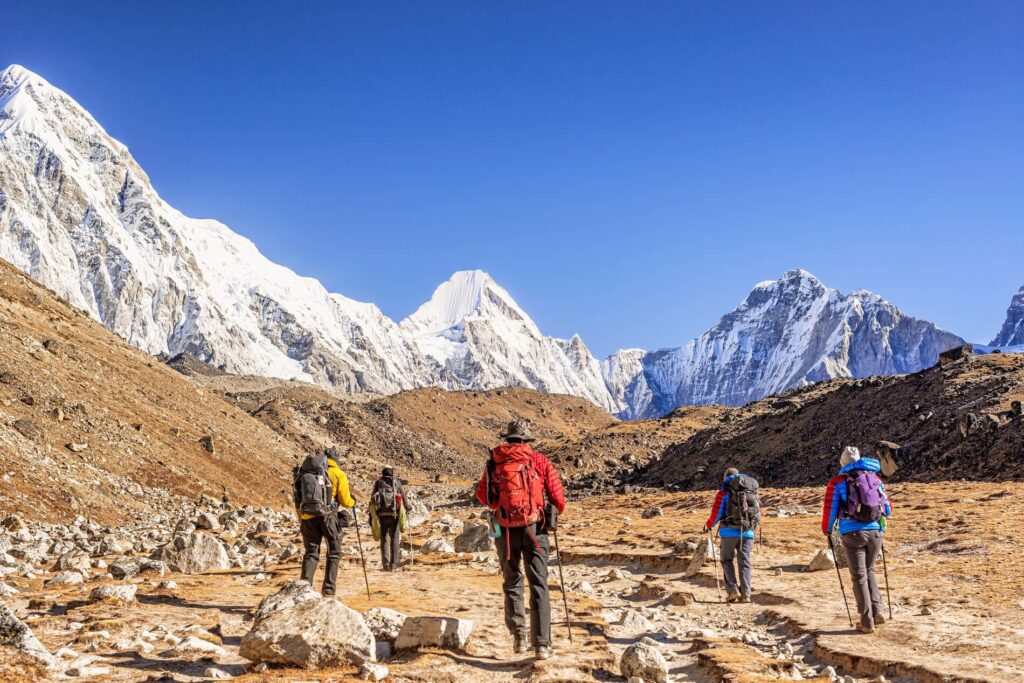
Narrow paths may also be obstructed by vegetation or other natural features making it difficult for people to see where they are going. This lack of visibility can increase the risk of accidents especially if the path is slippery or has steep drops. Moreover, narrow paths may not be accessible to everyone particularly people with mobility impairments or those using assistive devices such as wheelchairs or crutches. This can limit their ability to explore natural environments and enjoy the outdoors.
Everest Base Camp Preparation
The Everest Base Camp trek is an exhilarating and challenging journey that requires thorough preparation to ensure a successful and safe trek. First and foremost, physical fitness is crucial as the trek involves several days of walking on rugged terrain and steep inclines. It is recommended to begin preparing for the trek at least 3-4 months in advance with regular exercise, including cardio, strength training, and endurance building. Investing in high-quality trekking gear such as a comfortable backpack, hiking boots, warm clothing, gloves, and a hat is also essential. Acclimatization to high altitude is another critical aspect of the preparation process. The trek involves hiking at an altitude of over 5,000 meters and it’s necessary to acclimatize your body to avoid altitude sickness. Plan for a few extra days for the trek to allow for acclimatization along the way.
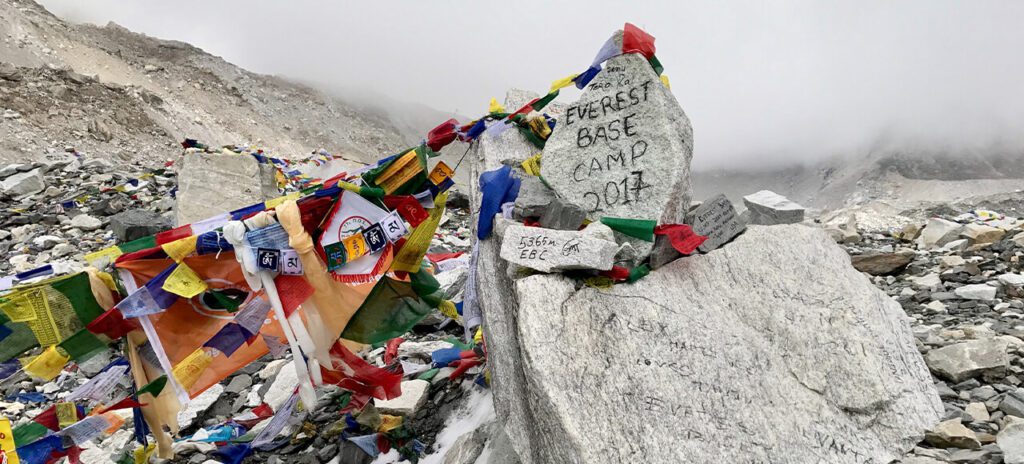
Obtaining the necessary permits and documentation for the trek is also essential. You will need to obtain a Sagarmatha National Park permit and a TIMS (Trekkers Information Management System) card. Additionally, carrying enough water and electrolyte-rich fluids, along with high-carbohydrate foods, is essential for proper hydration and nutrition. Having comprehensive travel insurance that covers trekking and high-altitude activities is also crucial to protect against any medical emergencies or accidents. Finally, being prepared for sudden changes in weather and carrying extra layers of warm clothing and rain gear is necessary. Planning your trek during the peak season (September to November) when the weather is relatively stable is also recommended.
Solo Trek to Everest Base Camp
Trekking solo to Everest Base Camp can be an exciting and rewarding experience but it’s not without its challenges. One of the most significant challenges you may face is navigation since the trail can be difficult to follow, particularly in areas where the trail is not well defined or multiple trails exist. Therefore, having a good understanding of the route, and carrying a detailed map and GPS device is essential. Altitude sickness is another significant problem for trekkers in the Everest region, which can be particularly challenging if you’re trekking solo.
Thus, it’s vital to acclimatize properly and be aware of the symptoms of altitude sickness. It’s essential to be physically fit and prepare yourself well in advance to complete the trek, which can be physically demanding, with long days of hiking at high altitudes. Safety is also a major concern, particularly in remote areas of the Everest region, where accidents and injuries can occur and it can be difficult to get help quickly.
Everest Base Camp for Beginners
Trekking to Everest Base Camp can be a daunting task for beginners due to various factors. Altitude sickness is one of the primary difficulties that trekkers face while ascending the mountain. As one climbs higher, the air becomes thinner, and the body may find it challenging to adjust to the lower oxygen levels. This can lead to symptoms such as headaches, nausea, dizziness and shortness of breath. Proper acclimatization is crucial to prevent altitude sickness.
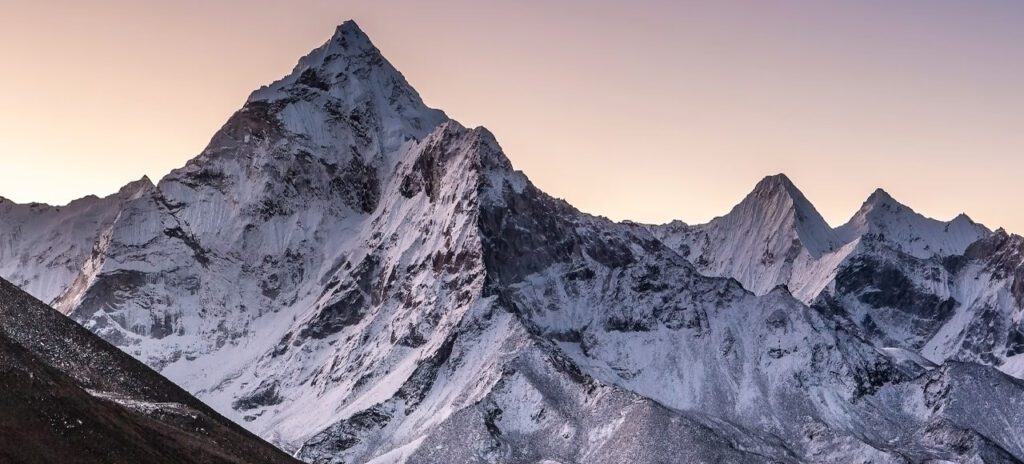
Another significant challenge faced by beginners during the Everest Base Camp trek is physical fitness. Trekking in this region demands a high level of endurance and stamina as it involves walking for several hours a day, climbing steep inclines and carrying a backpack. Prior training and regular physical activity can help in building the required physical fitness.
Weather conditions can also pose a challenge to beginners during the trek. The weather in the Everest region is unpredictable and can be harsh. Trekkers may face snow, rain and high winds during their journey which can make the trek more challenging. Proper gear and clothing are necessary to protect oneself from the elements. Accommodation can be a significant hurdle for beginners during peak trekking seasons. Availability of accommodation can be limited, which can make it challenging to find a place to rest and recover after a long day of trekking. It is recommended to book accommodation in advance to avoid any last minute issues.







